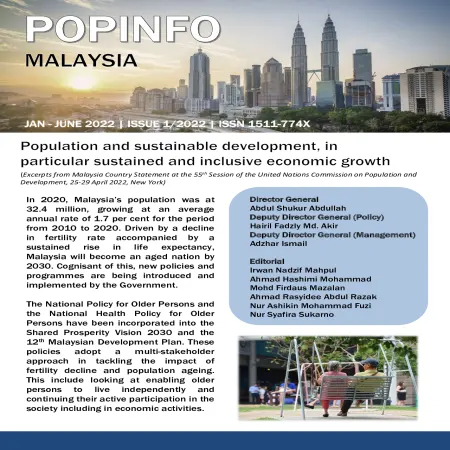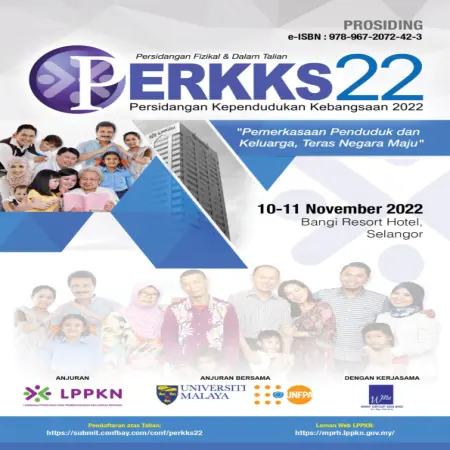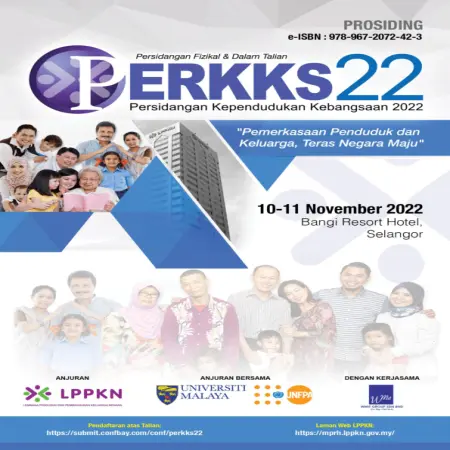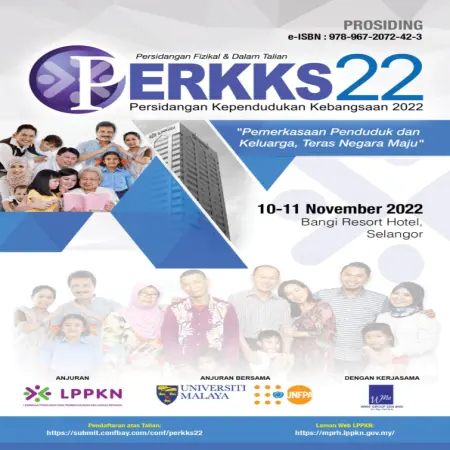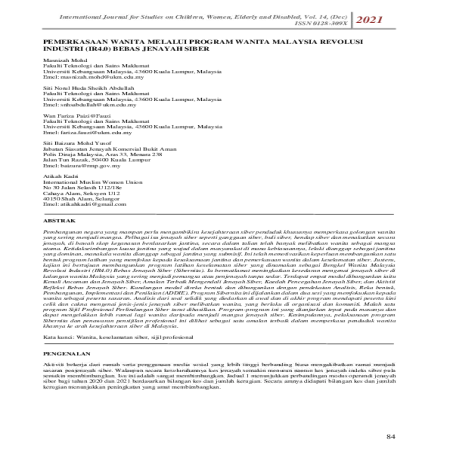TOPICS
Results for Topics : "Population"
|
|
Population and sustainable development, in particular sustained and inclusive economic growth
Item Type: Newsletter
Editor:
Year: 00/05/2022
Abstract: In 2020, Malaysia's population was at 32.4 million, growing at an average annual rate of 1.7 per cent for the period from 2010 to 2020. Driven by a decline in fertility rate accompanied by a sustained rise in life expectancy. Malaysia will become an aged nation by 2030.
|
|
|
|
|
|
The 55th session of the Commission on Population and Development United Nations, New York, 25-29 April 2022
Item Type: Country Statement
Editor:
Year: 00/04/2022
Abstract: Malaysia’s socio-economic development has been significant in transforming our economy from a low income to an upper-middle-income status. We have achieved significant progress in eradicating poverty and narrowing inequalities. However, the COVID-19 crisis has resulted in vulnerable households falling into poverty and hardship.
|
|
|
|
|
|
The impact of ageing, population growth and fertility rate on economic growth: new evidence using dynamic heterogeneous panel
Item Type: Book Section
Editor:
Year: 00/00/2022
Abstract: Over the last century, a declining fertility and mortality rate have led to an ageing population. This trend was primarily found in Europe and North America prior to the past two decades, but it has since become widespread. Due to altered reproduction patterns and rising life expectancy, the ageing population will probably increase.
|
|
|
|
|
|
Preliminary investigation of cognitive abilities among B40 single mothers
Item Type: Book Section
Editor:
Year: 00/00/2022
Abstract: There have been a lot of socioeconomic research regarding the B40 income group in Malaysia but hardly any conducted among single mothers within the B40 population. Research that emphasizes on B40 group whereby RM4,850.00 is the maximum household income which represents 40 percent of Malaysians is intensely required in order to acquire the most appropriate strategies and policies that can improve their socioeconomic conditions.
|
|
|
|
|
|
Characteristics of digital resilience of children post covid-19 in the Malaysian context
Item Type: Book Section
Editor:
Year: 00/00/2022
Abstract: Over the past two decades, there has been a sharp increase in digital media usage among Malaysian children. The significant increase of online and screen time adds on to the issues of children online safety which has always posed a significant risk to parents, even before the pandemic. The opportunity given by parents to access gadgets and games has transformed the way children perceive, react, and adapt to the world change especially in the era of IR4.0. Thus, this study intends to examine the characteristics of digital resilience of children in the Malaysian context.
|
|
|
|
|
|
Academic performance and gender stereotypes among KUPTM students
Item Type: Article
Editor:
Year: 00/12/2021
Abstract: This study was aimed to find the gender differences in stereotypes. This study also seeks to identify the relationship between different levels of academic performance and stereotypes. A quantitative method was applied in this study and data was collected through the distribution of questionnaires among 230 respondents from Kolej University Poly-Tech MARA Kuala Lumpur (KUPTM KL). The result shows that there is no significant relationship between stereotypes and gender.
|
|
|
|
|
|
Poverty in marginal communities: factors, cultures and counseling intervention strategies for the poor and homeless
Item Type: Article
Editor:
Year: 00/12/2021
Abstract: This article discusses the poverty faced by two marginal groups in Malaysia, namely the destitute and the homeless in Malaysia. This article covers the concept of poverty in Malaysia, the factors of poverty, the theory and culture of poverty, and the government's efforts in helping the marginalized. In addition, there is a discussion on the new classification of households issued by the Department of Statistics Malaysia in 2020. The government can more accurately identify the household income range to formulate and plan the assistance that needs to be channeled to specific groups in need.
|
|
|
|
|
|
Cabaran penjaja kecil wanita dalam era pandemik covid- 19 di Perlis
Item Type: Article
Editor:
Year: 00/12/2021
Abstract: Conventional business norms are now drastically changing with the outbreak of the unprecedented covid-19 pandemic. Thus, this study examines the challenges of small hawkers in the era of the Covid-19 pandemic in Perlis. The study respondents consisted of 200 small women hawkers around small towns in Perlis.
|
|
|
|
|
|
Memperkasakan keusahawan sosial produk menstruasi bagi membasmi kemiskinan haid
Item Type: Article
Editor:
Year: 00/12/2021
Abstract: The Sustainable Development Goals (SDGs) set Goal-1 to end poverty in all its forms everywhere. However, menstrual poverty still happens to teenage girls and women from the past until now. It is not easy for them to get or buy menstrual products due to financial constraints. Based on a focus group discussion research session, the main objective of the study is to review the social entrepreneurship strategies carried out by three social entrepreneurship organizations – BunPad, KotMe and AntPower (pseudonym of the study) in dealing with the issue of menstrual poverty among underprivileged women.
|
|
|
|
|
|
Pemerkasaan wanita melalui program wanita Malaysia Revolusi Industri (IR4.0) bebas jenayah siber
Item Type: Article
Editor:
Year: 00/12/2021
Abstract: Sustainable national development needs to take into account the cyber well-being of the population, especially empowering women who are often the victims. Various cybercrime issues such as cyber harassment, cyberbullying, cyber stalking and criminal intimidation, under the scope of gender-based violence, online have largely involved women as primary victims. The gender power imbalance that exists in a society where usually, men are considered the dominant gender while women are considered the submissive gender. This has motivated the need to develop a form of training program that focuses on gender equality and women’s empowerment in cyber security. Therefore, this study aims to develop a cyber security training program called the Bengkel Wanita Malaysia Revolusi Industri (IR4.0) Bebas Jenayah Siber (Sibernita).
|
|
|
|





